An amazing variety of green tomatoes - the "Swamp" tomato for real gourmets
How to determine when it is time to harvest tomatoes? Of course, according to their color. In most cases, ripe tomatoes are red, brown, pink, orange or purple in color. But by the method of selection, agronomists bred varieties, the degree of maturity of which is difficult to determine by shade, because their ripened fruits are green. These crops include the Swamp tomato. How to understand when to remove fruits from a bush and what kind of care this exotic variety needs - read on.
The content of the article
General description of the variety
The Swamp variety got its name from the unusual color of the fruit. When ripe, they are green with a yellowish tinge. Small blotches of pink, yellow or brown may be present.
The variety was bred by domestic breeders. It is already included in the state register and is actively grown by gardeners around the world.
The manufacturer recommends growing the Swamp under a film or in the greenhouse... In the southern regions, it is possible to cultivate it in the open field.
You can see what ripe tomatoes look like in the photo.
Reference. The experience of advanced gardeners suggests that Swamp tomatoes grown in greenhouses produce larger fruits than when cultivated in the open field.
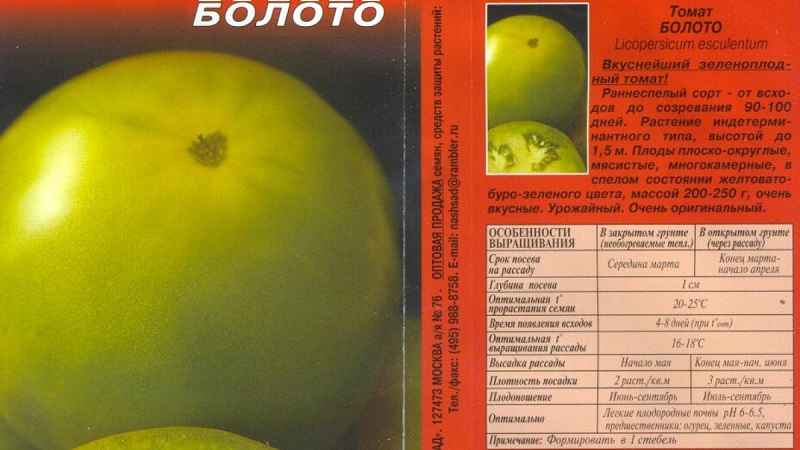
Characteristics of tomatoes
The characteristics of the tomato suggest that this variety is more suitable for experienced gardeners than beginners. Its cultivation is associated with some difficulties.
Description of Swamp Tomatoes:
| Parameter | Indicators |
| Bush type | Indeterminate... The height varies between 110-150 cm. In greenhouses, the bushes grow taller. Their growth must be artificially limited. They also need timely garters and pinning. The plants are powerful. The number of large dark green leaves is average. The first ovary is located above the 7th leaf. |
| Growing method | The manufacturer recommends growing Swamp tomatoes in greenhouses or greenhouses. In hot regions, it is possible to plant tomatoes in open ground. In this case, the size of the fruit will be smaller. |
| Yield | Average. From 1 sq. m per season, up to 6 kg of fruits are harvested. |
| Fruit | Large. On average, one fruit weighs 150-250 g. In a greenhouse, some tomatoes gain a mass of 360 g. When ripe, tomatoes are green, with a yellow tint and orange or pink spots. A dark green spot is present at the base. Red inside, with a green or white spot at the base. They have a regular round shape. Tomatoes are green inside, with yellow and pink spots. The shape is round, flattened, with a ribbed base. The taste is sweet with sourness. The fruits are juicy, with an average amount of pulp. One fruit contains up to 7 chambers with seeds. |
| Transportability | Low. Tomatoes have a thin skin and therefore cannot be stored for a long time. |
| Ripening terms | Early maturing variety. The fruits ripen three months after sowing the seeds. Fruiting continues until the end of August. |
| Disease resistance | Has no resistance to tomato diseases. |
Growing seedlings
Like other tomatoes, the Swamp is grown in seedlings. Seeds are sown 50-55 days before planting plants in a permanent place.The best time for sowing is the beginning or middle of March.
Before sowing seeds, check the lunar calendar indicators. Seeds planted on a suitable lunar day will germinate faster and the plants will be healthier.
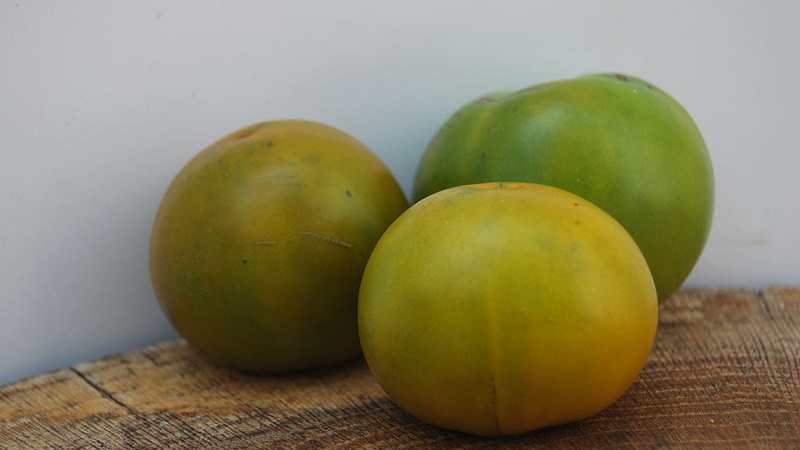
We prepare the planting material
The Swamp variety is not resistant to plant diseases. Therefore, the preparation of seeds must be taken especially seriously:
- Check the expiration dates of the planting material. Remove all black, moldy and damaged seeds.
- To test seeds for germination, soak them in saline for half an hour. Remove floating ones, and rinse and dry those that have sunk to the bottom.
- Disinfect the seeds. To do this, immerse them in a solution of potassium permanganate diluted in a ratio of 1: 100 for 20 minutes.
To increase the germination rate, seed stimulate. Most popular methods:
- Purchased funds. In stores there are a lot of drugs that stimulate seed germination ("Kornevin", "Zircon", "Novosil", etc.). They are used according to the instructions for use.
- Folk remedies: soda and honey solution, aloe juice. They are impregnated with the fabric in which the seeds are wrapped. Then a damp cloth with planting material is placed on a saucer and covered with foil.
- Cold stimulation. For several days, the seeds are placed in a refrigerator, then transferred to a warm place. After that, you can start sowing.
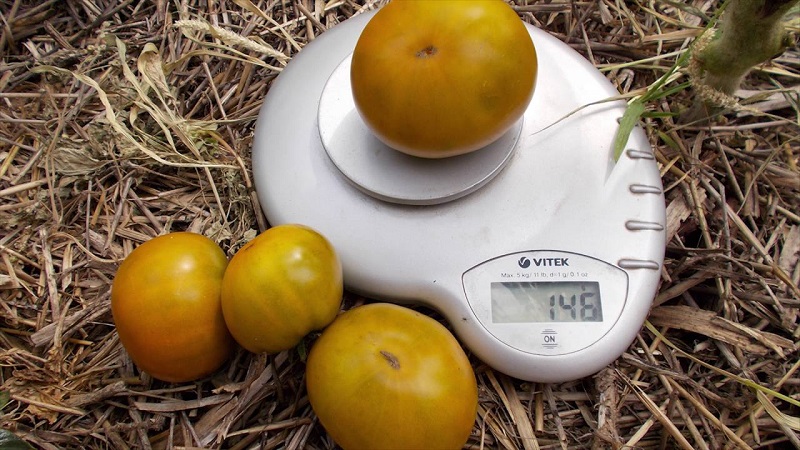
Soil and containers for sowing
For sowing seeds, large containers are used that can accommodate a large amount of planting material: trays, special boxes.
Plants are planted in a small container. For picking tomatoes, use special pots, disposable cups and any other containers.
For tomatoes, choose a light soil. This can be a special soil mixture or a self-prepared composition, for which equal portions of peat, humus and sod are taken. A superphosphate matchbox is added to the mixture and a little ash.
Both containers and soil for tomato seedlings need to be disinfected - pour boiling water or solution potassium permanganate.
Sowing tomato seeds Swamp
The soil is poured into the prepared containers. Grooves are made in it with a depth of 1 cm. The distance between the grooves is 2-3 cm. Seeds are laid out in the grooves at intervals of at least 2 cm. The planting material is covered with earth from above.
After planting the seeds, the soil is moistened with a spray bottle. From above, the container is closed with glass and placed in a place with a temperature of at least 23 degrees.
Basic rules for caring for seedlings
Seedling care requires a minimum of labor. The main thing is to follow the basic rules for caring for tomatoes at this stage:
- Watering plants. Watering is not needed before germination. After the first shoots appear, the soil is moistened with a syringe or pipette as it dries. The planted tomatoes begin to be watered a week after the pick with settled water so that the liquid falls only on the soil.
- Picking. After the appearance of 3 true leaves, the tomatoes are seated in separate containers. Do this carefully so as not to damage the root.
- Top dressing. Tomatoes dived into separate containers are fertilized for the first time two weeks after transplanting. For these purposes, complex fertilizers are used. Then two more dressings are made - after 14 days and a few days before transplanting to a permanent place.
- Hardening. Plants begin to harden two weeks before planting seedlings in the ground. To do this, tomatoes are taken out daily, gradually increasing the time.
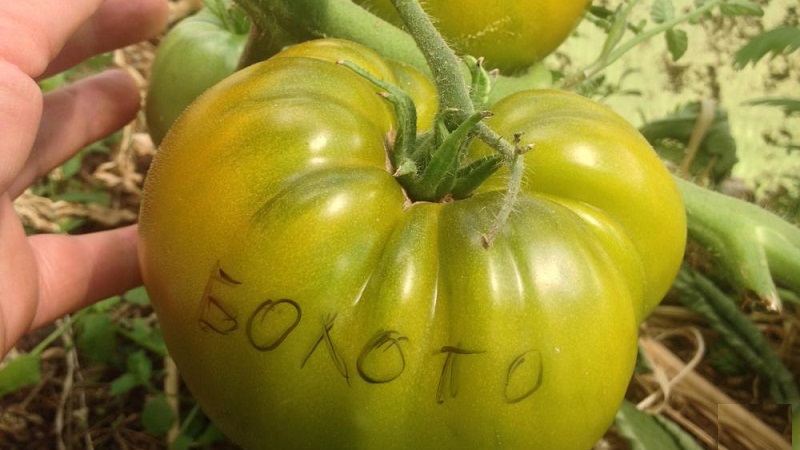
How to grow the Swamp variety
Cultivation of this variety is associated with a number of difficulties. The variety needs garter and pinching and does not have resistance to plant diseases.
Tomatoes are planted in a permanent place in late or mid-May. Planting is done when the soil warms up.
Planting seedlings in a permanent place
Before planting seedlings in a permanent place, prepare the soil.To do this, they dig it up and weed in the fall. At the same time, humus, ash and dry chlorine are introduced into it.
In the spring, the soil is dug up again. The holes are staggered. The distance between the rows should be 50 cm, and between the recesses for tomatoes - 40.
Before planting, the seedlings are watered and fed. A tablespoon of ash is poured into each hole. To prevent infection, the beds on which the tomatoes will grow are watered with a solution of potassium permanganate.
Immediately before transfer seedlings removed from pots. Plants are placed in the center of the hole and buried two-thirds of the stem. A garter support is installed near each bush.
Tomato care
Swamp tomatoes are a moisture-loving variety. They need to be watered daily, in the afternoon. It is important not to flood the soil so that it has time to dry out in a day.
The plant is formed into 1-3 stems. The more stems, the more abundant the crop will be, but the later it will appear.
Bushes stepchildren as sprouts appear. At the same time, not only stepchildren break off, but also yellowed leaves and incorrectly formed inflorescences.
It is better to go to sleep early in the morning or in the afternoon. On the day of pinching, watering is not needed to reduce the risk of tomato infestation.
The Swamp tomato grows up to 1.5 m. As the bushes grow, they are tied to a wooden support or trellis.
The first time tomatoes are fed three weeks after transplanting to a permanent place. Subsequent fertilization is done every two weeks. Experienced gardeners are advised to alternate organic and mineral formulations.
Foliar dressing is also popular with tomatoes. For this, formulations with boron are used.
What difficulties can you face
When growing a Swamp, you can face a number of difficulties. Knowing about them in advance, you will prevent the death of plants:
- Withering and yellowing of leaves. This sign indicates a violation of watering rules. The problem can arise due to a lack of liquid, and due to waterlogging of the soil.
- Tomatoes have lost their turgor. If everything is in order with the number of irrigations, then the problem may arise when using unsettled water.
- Leaves, fruits or inflorescences of irregular shape. This symptom is caused by a lack of nutrients. It may be worth replacing fertilizers or increasing the amount of fertilizing.
- Fruits crack. Reasons: too hot weather, over-watering or removing a lot of greenery from the bush.
- Roots appeared on the stem. The plant lacks nutrients. It is necessary to spud the tomatoes, covering the roots with earth.
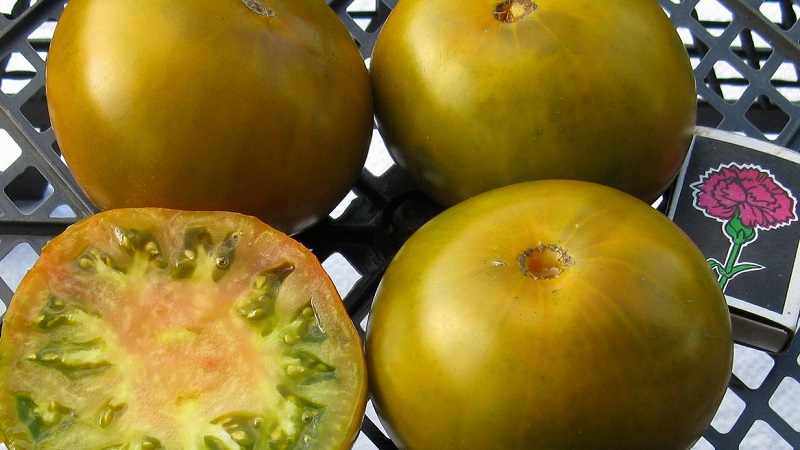
How to protect the beds from diseases and pests
The Swamp variety is not immune to tomato diseases. He is often affected by various diseases.
Consider how to deal with them:
- Late blight... A fungal disease in which the leaves and fruits of tomatoes turn black. Antifungal drugs are used as a preventive measure (for example, "Baktofit").
- Alternaria... The causative agent is a fungus. It is characterized by black spots on the leaves and fruits. At the initial stages of the development of the disease, Quadris is effective.
- Anthracnose. When damaged, the leaves dry up and fall off, and the fruits are covered with depressed yellow-brown spots. For prophylaxis, the bushes are sprayed with "Quadris". When signs of illness appear, formulations with a hay stick are used.
- White spot... Tomato greens are covered with white and brown spots. There are no methods of prevention and treatment for this disease yet.
- Gray tomato rot... The whole plant is covered with a gray fluffy bloom. For prophylaxis, chemicals are used, for example, "Bayleton".
- White rot... The fruits are covered with a white fluffy bloom, tissue necrosis is observed. The method of prevention is the treatment of soil and seeds before planting tomatoes.
- Powdery mildew. Depending on the pathogen, tomato bushes are covered with white or yellow spots. To cure the disease, sodium humate is used.
- Verticillary wilting. The leaves of the plant turn yellow and wither. The method of prevention is the treatment of soil and seeds with disinfecting compounds.
- Brown spotting. Dark spots and plaque form on the bushes. When signs of disease appear, they are treated with HOM.
- Top and root rot. It is characterized by necrosis of the upper or lower part of the bush and its wilting. For prevention, soil and planting material are disinfected.
- Stem cancer... Spots form on the stem, from which gum oozes. For prevention, the plants are sprayed with "Immunocytophyte". When damage occurs, they are treated with a mixture of chalk and "Rovral".
- Fusarium... Gradual wilting of the whole plant is observed. For prevention purposes, plants are watered with drugs from the benzimidazole group.
The list contains the most common fungal diseases of tomatoes and methods of dealing with them. Tomatoes also infect viral diseases, but it is practically impossible to prevent their appearance in tomatoes that do not have immunity.
Insect pests must be promptly removed from tomatoes by hand or using chemicals. Many of them carry viruses.
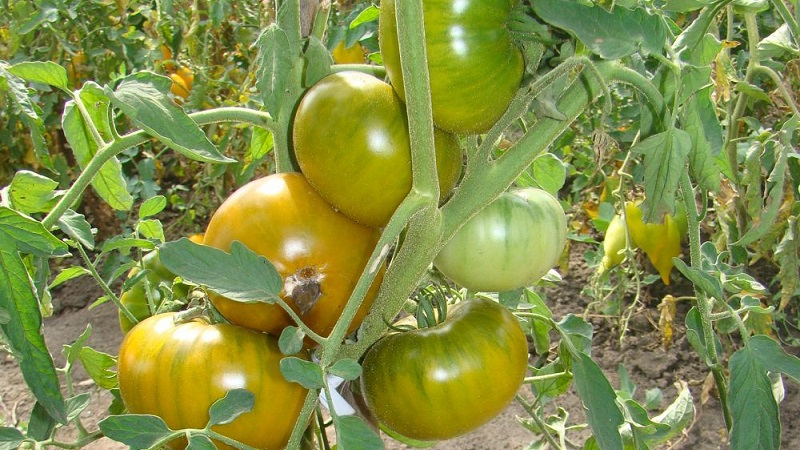
Features of growing in open ground and greenhouse
When grown outdoors, the plant reaches a height of 110-120 cm. In the greenhouse, the bushes grow slightly higher - 150 cm. Take this into account when choosing the size of the support pegs and the greenhouse structures themselves.
Tomatoes need fresh air. Therefore, regularly ventilate the greenhouse by opening the vents.
When transplanting seedlings into open ground, the first week the tomatoes are covered with foil. This protects them from night frost.
In the open field, tomatoes Swamp must be mulched. The beds are covered with straw, hay or burlap.
Harvesting and application of the crop
The fruits ripen at the end of June. Ripe tomatoes are easy to distinguish despite their green color. Such tomatoes have a yellowish tint and pink blotches, softer to the touch, and a noticeable dark spot appears on their base. Ripe fruits must be plucked immediately, leaving the stalk.
The harvested tomatoes are stored in the refrigerator. Swamp tomatoes are mainly used for fresh consumption. When preserved, the thin skin of the fruit may crack. Due to the exotic color of tomatoes, they are not used for making ketchups, tomato juices and pasta.
Advantages and disadvantages of the Swamp variety
The advantages of the variety:
- unusual appearance;
- pleasant taste;
- good yield.
Disadvantages:
- lack of immunity to disease;
- the need for a garter and pinching;
- the ability to use only fresh.
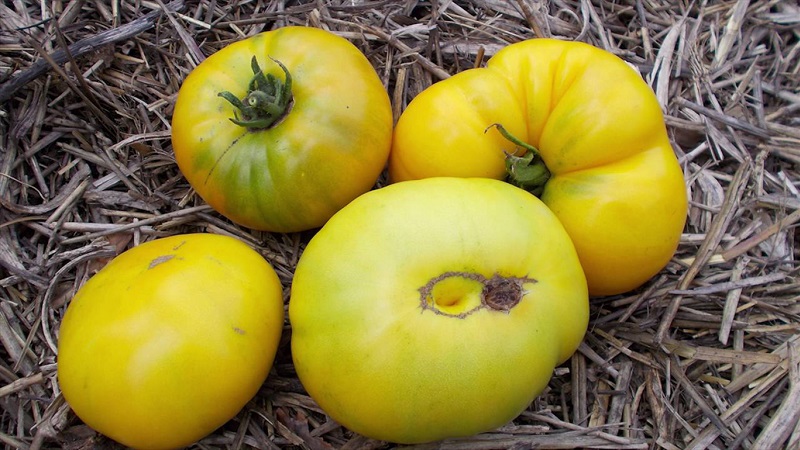
Farmers reviews
Swamp tomato is an exotic variety with green fruits. Reviews about him are contradictory.
Irina Orlova, Murmansk: “I decided to take tomato seeds for a sample Swamp. The yield is average. Tomatoes require multiple treatments for diseases and pests. Grown in a greenhouse. The only advantage is the unusual color tomatoes that surprised the whole family. "
Mikhail Lisitsin, Tver: “Swamp has grown tomato for the first time. The harvest is good, the tomatoes are large, sweet, green. Looks interesting in salads with tomatoes of a different color. I'm going to grow a couple of beds every year. "

Conclusion
The early ripe tomato variety Swamp refers to exotic tomatoes. Even when ripe, the fruit is green. Ripe tomatoes have a sweet taste. They are not suitable for transportation, so they are only grown for personal consumption.
In the process of growing, you can face a number of difficulties. This variety has no immunity to diseases, needs a garter and pinching. It is perfect for experienced gardeners looking to try something new.